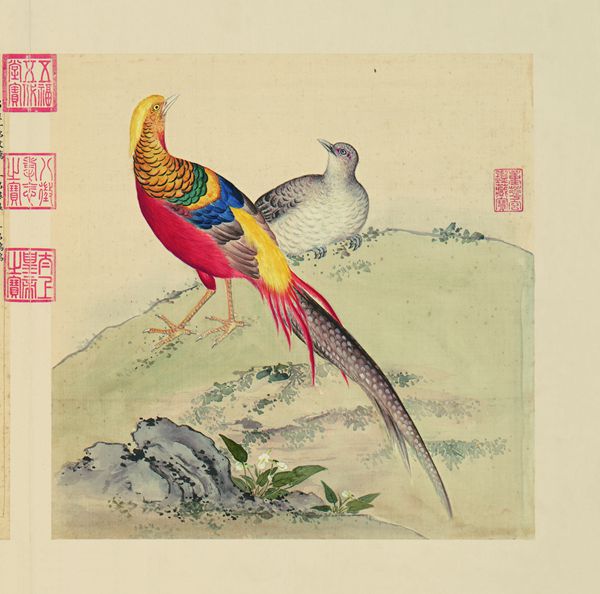 |
|
Golden pheasants, a type of birds in Niao Pu ("graphics of birds") of the book. |
"In Niao Pu, we can see that the expressive techniques of traditional Chinese ink-water painting are kept," she says, adding, "but there are also paintings in the album which show that typical techniques from Western paintings were applied to deal with shadows and add realistic detail."
Qianlong loved the three encyclopedias and kept them in his residence for frequent reference and the education of his children.
Natural History in the Palace Museum is edited from the three graphic albums by selecting 120 of their illustrations. The subjects' modern names (along with their Latin references, where applicable) are included, as well as vividly-written background information and stories, based on historical documents.
The entries range from animals more commonly seen by the emperor, like tigers, donkeys, and dogs, to those that Qianlong would have never seen in his lifetime, like giraffes on the African savanna or whales breaking the ocean surface.
"In the book, each species is given an 'ID card', which enables readers to look up any information on record, from the past to the present," says Wang Zhigeng, director of children's book department at the National Library of China who is also an editor of the book.
For example, readers may be surprised to discover that wild elephants lived along the coast of Guangdong province as late as the Song Dynasty (960-1279). Now they can only be found in the tropical forests of Yunnan province.
Of course, even royal encyclopedias can make mistakes, due to limitations in the research of the time. For instance, the painters have portrayed the porcupine as a variety of boar with quills.
Wang says the choice of "natural history" in the title is to encourage interdisciplinary creativity among today's young generation.
"People have a long tradition studying natural history and our systematic understanding of nature is constantly being challenged and rebuilt," he says. "But, people wonder why it's rare to see an epoch-making genius like Charles Darwin, a naturalist who was far ahead of his time.